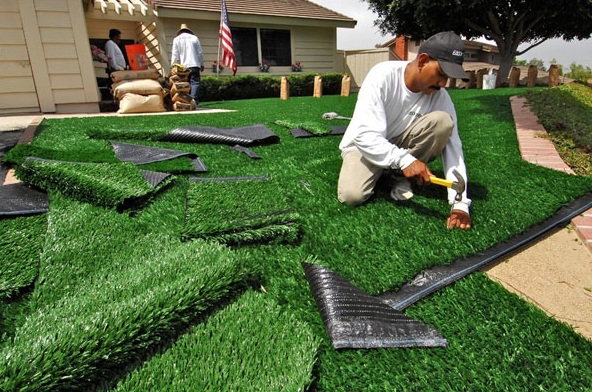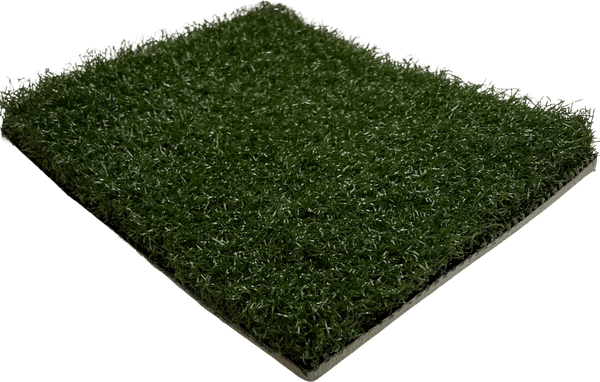Experience a Flawless Lawn with Arizona Artificial Turf for Any Outdoor Space
Explore the Environmental Advantages of Opting for Artificial Lawn Solutions
The fostering of synthetic grass solutions provides a compelling possibility to resolve pushing environmental challenges. By significantly reducing water usage and minimizing the application of damaging chemicals, these options not just promote sustainable landscaping but also protect regional communities. Additionally, the reduced carbon impact linked with reduced upkeep tasks adds to a more sustainable method to land monitoring. The effects of these advantages extend past simple conservation efforts, increasing questions concerning their long-term impact on environment conservation and total ecological equilibrium. Checking out these measurements exposes a complicated interaction worth thinking about.
Water Conservation Advantages
One of one of the most considerable benefits of artificial grass is its ability to save water. Conventional grass lawns require considerable irrigation, especially in locations susceptible to drought or water constraints. In contrast, synthetic grass does not require watering, substantially minimizing the overall need for water sources. This function is especially helpful in deserts where water scarcity is a pushing issue.
By removing the need for routine watering, synthetic grass adds to lasting landscape methods and helps minimize the ecological effect of extreme water intake. The conservation of water extends to the decrease of runoff, which can lead to dirt disintegration and river contamination.
Furthermore, the installment of synthetic grass enables house owners and communities to assign water sources much more effectively, concentrating on vital uses such as alcohol consumption water and farming. The shift towards man-made grass not just promotes liable water use yet additionally straightens with broader environmental objectives aimed at preserving natural deposits.
As areas increasingly focus on sustainability, the water conservation advantages of synthetic grass provide an engaging instance for its fostering in property and business landscape design tasks.
Decreased Chemical Use
The shift to artificial turf substantially decreases the dependence on chemical treatments generally made use of in all-natural grass upkeep. Conventional lawn administration commonly entails the application of pesticides, fertilizers, and herbicides to advertise growth and control insects. These chemicals can pose dangers to human health, neighborhood wildlife, and the atmosphere, adding to dirt and water contamination.
In comparison, synthetic turf gets rid of the requirement for these harmful compounds. By decreasing the release of synthetic substances right into the community, man-made lawn advertises much healthier soil and water systems.
Furthermore, the absence of chemical overflow related to synthetic grass installments helps safeguard regional rivers from pollution, supporting water life and preserving biodiversity. Arizona artificial turf. As communities significantly prioritize sustainable practices, deciding for synthetic grass presents a feasible service that aligns with environmental preservation goals. With this change, home owners can delight in lush green rooms without endangering environmental health and wellness, leading the way for a more sustainable future
Reduced Carbon Impact

Moreover, the installation of man-made lawn can result in considerable water preservation. Natural yards require significant quantities of water for irrigation, which not only includes in the carbon impact connected with water extraction and therapy but likewise stress local water resources. On the other hand, synthetic grass needs very little upkeep, calling for no watering, thus significantly lowering water usage and its associated energy expenses.
Furthermore, the long life of artificial turf contributes to its reduced carbon effect. With a life expectancy of approximately 15 years or more, the requirement for constant replacements is lessened, causing less waste and lower power usage in manufacturing and taking care of typical lawn alternatives. In general, synthetic grass presents a lasting option for environmentally mindful landscape design.
Environment Conservation
Habitat preservation is a vital consideration in the argument over landscaping selections, especially when comparing synthetic turf to all-natural lawn. Natural yard yards often call for extensive upkeep, consisting of using herbicides, chemicals, and plant foods, which can negatively impact local ecological communities. These chemicals can seep into the dirt and rivers, harming indigenous plants and animals and interfering with regional habitats.
On great site the other hand, man-made turf provides an opportunity to lower the environmental impact of landscaping. By choosing artificial lawn, property owners can reduce the interruption of all-natural habitats connected with standard grass care methods. Synthetic grass removes the need for unsafe chemicals, thus securing neighboring wildlife and preserving the honesty of surrounding environments. In addition, the installation of man-made lawn can lead to the conversion of former turf locations into more biodiverse landscapes, such as pollinator gardens or native plant locations, which can sustain local wildlife.
Eventually, the change to synthetic grass not just conserves water and lowers maintenance initiatives but also fosters a more harmonious relationship between human activities and the native environment, advertising habitat preservation while doing so.
Long-Term Sustainability
Long-lasting sustainability is a critical consider examining the advantages of synthetic grass over conventional grass yards. One of one of the most considerable benefits of synthetic grass is its toughness; it can last as much as 15-20 years with minimal upkeep, whereas natural lawn needs frequent reseeding and substitute. This longevity reduces the requirement for continuous resources, such as water, plant foods, and chemicals, which are necessary for maintaining a healthy and balanced turf yard.
Furthermore, synthetic grass adds to a reduction in carbon discharges connected with yard treatment equipment. Standard grass typically call for gas-powered mowers, leaners, and blowers, every one of check my source which add to air pollution. Arizona turf. On the other hand, man-made lawn eliminates the need for such devices, advertising a cleaner environment
Additionally, the manufacturing of artificial lawn increasingly uses recycled products, improving its sustainability account. As manufacturers take on green practices, the ecological footprint of synthetic grass remains to lessen.

Verdict
The fostering of fabricated lawn solutions presents significant environmental benefits, consisting of significant water preservation, lowered dependence on unsafe chemicals, and a reduced carbon impact. Fabricated grass aids in preserving all-natural environments by lessening land disturbance and advertising lasting sustainability with the use of durable products. Collectively, these factors emphasize the possibility of synthetic grass to add positively to environmental wellness and use a feasible alternative to typical landscape design practices in a significantly resource-conscious world.
In comparison, synthetic turf does not require watering, dramatically decreasing the general demand for water resources. By lessening the launch of artificial substances right into the ecological community, additional hints artificial lawn promotes much healthier soil and water systems.
Furthermore, the installment of synthetic lawn can result in substantial water preservation. In contrast, man-made lawn needs very little maintenance, needing no watering, therefore considerably lowering water usage and its connected power costs.
